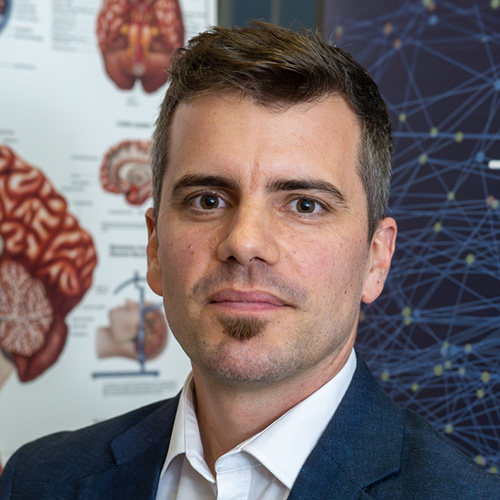
Prof Uros Marusic
Laboratory for Kinesiological Research
Science and Research Centre
Koper, Slovenia
Brain in Space: How Microgravity Reshapes Neural Control of Movement
Uros Marusic1, Bostjan Simunič1, Gianni Biolo2, Carlo Reggiani1,4, Bruno Grassi3, Marco Narici1,4, Rado Pišot1
1Institute for Kinesiology Research, Science and Research Centre Koper, Slovenia;
2Department of Medical Sciences, University of Trieste, Italy
3Department of Medicine, University of Udine¸ Italy
4Department of Biomedical Sciences, University of Padova, Padua, Italy
Exposure to weightlessness leads to significant structural and functional changes in the human brain, particularly affecting sensorimotor control. Spaceflight leads to headward fluid shifts, ventricular enlargement, cortical remodeling and altered brain positioning. These adaptations disrupt vestibular, proprioceptive and tactile inputs, leading to temporary impairments in sensorimotor integration upon return to Earth. Astronauts often suffer from balance problems, altered gait patterns and impaired movement coordination after flight. Ground-based bed rest studies effectively simulate these microgravity-induced changes, but their effects on the brain dynamics associated with locomotion have not yet been sufficiently explored.
To address this gap, we conducted a 10-day bed rest study in healthy older men (69 ± 3 years) using mobile brain/body imaging. Locomotor-related activity was assessed as participants walked for 2 minutes at their self-selected gait speed, with spatiotemporal gait parameters recorded using whole-body kinematics (Motion Shadow, USA) while brain dynamics were simultaneously monitored with a mobile 128-channel EEG (Cognionics, USA). We hypothesized that re-exposure to sensory input after bed rest would lead to increased theta synchronization in the anterior cingulate cortex (ACC) and posterior parietal cortex (PPC) due to prolonged immobilization. Gait-related spectral perturbations will be presented to elucidate possible neural mechanisms underlying altered locomotor capacity after bed rest and provide insights into spaceflight-induced neuromotor adaptations.
